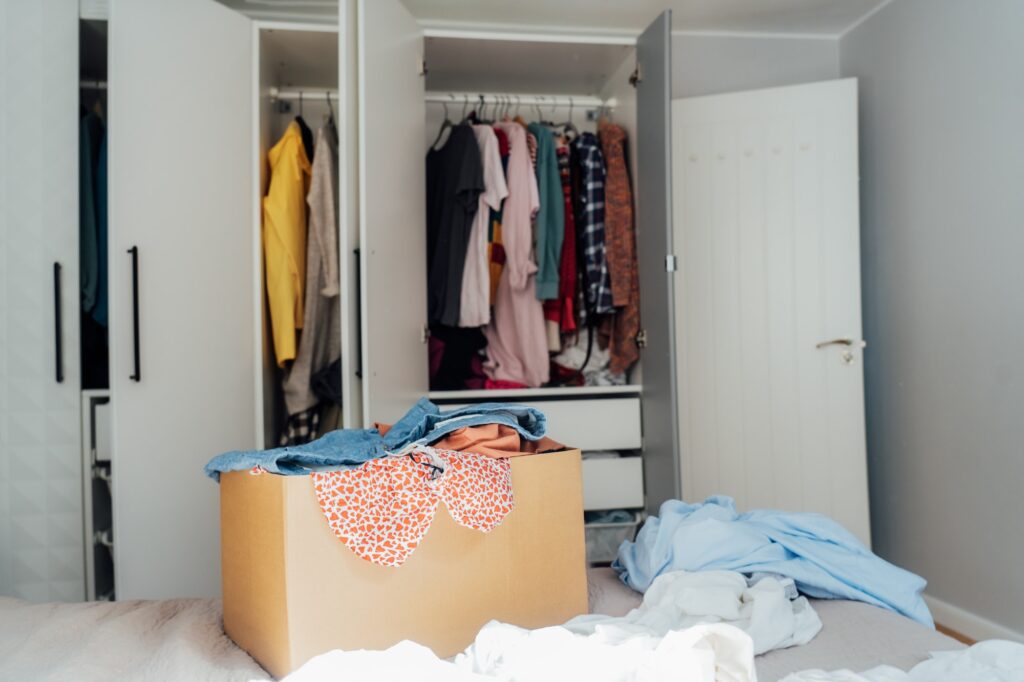Are you tired of the clutter in your home? Do you dream of a clean and organized living space that brings you peace and joy? If so, it’s time to embark on a decluttering journey. In this comprehensive guide, we will explore effective tips and methods to help you declutter your home and create a harmonious living environment. From understanding the reasons behind clutter to practical strategies for sorting and organizing, we’ve got you covered. So, let’s dive in and transform your home into a clutter-free oasis!
Why Do We Have Clutter?
Before we dive into the decluttering process, it’s important to understand why we accumulate clutter in the first place. Clutter can come from various sources, including sentimental attachments, bargain shopping, technological gadgets, hidden clutter, and the fear of not having something when we need it. By recognizing these underlying factors, we can develop a better mindset and approach to decluttering.
Sentimental Clutter: Letting Go of the Past
One common reason for holding onto clutter is sentimentality. We attach memories and emotions to objects, making it difficult to let them go. However, it’s essential to remember that the meaning lies within us, not in the physical items. To overcome sentimental clutter, choose a few meaningful items to keep and display prominently. Take photos of the rest to preserve the memories, and then let them go.

Bargain Clutter: The Allure of a Good Deal
We’ve all fallen into the trap of buying something just because it’s a great deal, even if we don’t actually need it. This type of clutter accumulates over time and can quickly clutter our homes. To overcome bargain clutter, it’s important to stop shopping impulsively and donate surplus items to charities. By resisting the urge to buy unnecessary items, we can break free from the cycle of clutter.
Technological Clutter: Keeping Up with the Latest Trends
In today’s fast-paced world, technology plays a significant role in our lives. However, constantly upgrading to the latest gadgets can lead to technological clutter. Instead of succumbing to the temptation of always having the newest version, consider using your current devices until they no longer serve their purpose or become obsolete. This approach not only reduces clutter but also saves money and minimizes electronic waste.
Hidden Clutter: Out of Sight, Out of Mind
Hidden clutter is the clutter we stuff into storage spaces or shove into drawers, hoping that we’ll deal with it later. Unfortunately, this only postpones the inevitable and allows clutter to accumulate unnoticed. To tackle hidden clutter, it’s important to bring everything out in the open, take inventory, and assess your needs. By confronting the clutter head-on, you can make informed decisions about what to keep and what to let go.
Fear-Based Clutter: The “What If” Mentality
The fear of not having something when we need it can lead to clutter. We often hold onto items under the belief that we might need them someday. However, this fear-based clutter can be overwhelming and burdensome. Trust that you will be able to obtain what you need when the time comes and let go of the excess. Remember, the value of decluttering outweighs the potential need for unused items in the future.
The Decluttering Process: Where to Start
Now that we understand the reasons behind clutter, let’s dive into the practical steps of the decluttering process. By following these guidelines, you can systematically declutter your home and create a space that truly reflects your desired lifestyle.
Set a Clear Plan and Timeframe
Decluttering can feel overwhelming, especially if you’re unsure where to start. To avoid feeling lost, set a clear plan and timeframe for your decluttering journey. Break down the process into manageable tasks and allocate specific time slots for each task. Start with smaller areas and gradually work your way up to larger spaces. This approach allows you to see progress and stay motivated throughout the process.

Choose an Area to Begin
Selecting an area to declutter is the first step in the process. It’s best to start with smaller areas, such as a desk drawer or a closet shelf, as these spaces can be tackled within a shorter timeframe. By focusing on one area at a time, you can give your full attention to decluttering and avoid feeling overwhelmed.
Gather Supplies: Trash Bags and Containers
Before you begin decluttering, gather the necessary supplies. Grab some trash bags for items that need to be thrown away and find containers or boxes for items you plan to donate or sell. Having these supplies readily available will make the decluttering process more efficient and organized.
Start the Timer and Begin Sorting
Once you have your supplies ready, set a timer for a specific amount of time, such as 10 minutes. Starting with a short timeframe allows you to ease into the decluttering process without feeling overwhelmed. Begin by sorting through the items in the designated area, one by one.
Identify Trash and Dispose of It
As you sort through the items, identify anything that is obviously trash and dispose of it in the trash bags. This step helps clear out the unnecessary clutter and creates space for the items that truly matter.
Evaluate Each Item: Usefulness and Enjoyment
As you handle each item, ask yourself if it serves a useful purpose or brings you joy. If an item is useful and brings value to your life, put it back in its designated place. However, if an item no longer serves a purpose or fails to bring joy, place it in the donation or sell box. Remember, the goal is to surround yourself with items that enhance your life and align with your values.
Work Efficiently and Stay Focused
To make the most of your decluttering session, work efficiently and stay focused. Avoid getting caught up in sentimental attachments or distractions. Keep in mind that the objective is to declutter and create a more organized home. By working quickly and decisively, you can make significant progress in a short amount of time.
Complete the Session and Put Things in Order
When the timer goes off, stop decluttering and take a moment to put away any items that are out of place. Return them to their designated spots and ensure everything is in order. Maintaining a tidy and organized space during the decluttering process helps keep your motivation high and sets the stage for future success.
Dispose of Trash and Donate/Sell Items
After each decluttering session, make sure to dispose of the trash bag in the appropriate garbage bin. If you have items to donate or sell, place them in your car and schedule a time to drop them off at a donation center or list them for sale online. By taking immediate action, you can prevent the clutter from returning to your home.
Celebrate Your Progress
Decluttering is a significant accomplishment, and it’s essential to celebrate your progress along the way. Take a moment to acknowledge your hard work and the positive changes you’ve made in your living environment. Reward yourself with a small treat or engage in an activity that brings you joy. By celebrating your achievements, you’ll stay motivated and inspired to continue the decluttering journey.
Decluttering Tips, Methods, and Approaches
Now that you have a clear understanding of the decluttering process, let’s explore various tips, methods, and approaches to help you declutter more efficiently and effectively. While different approaches work for different individuals, these strategies can provide inspiration and guidance as you navigate your own decluttering journey.
Minimalists’ Perspective: The Power of Purpose
Minimalists believe that decluttering is not just about removing physical possessions but also about aligning your life with your values. They emphasize the importance of having a clear purpose and intention behind your decluttering efforts. By understanding why you want to declutter and what you hope to achieve, you can make informed decisions about what to keep and what to let go.
The 3 or 4-Box Method: Sorting Made Easy
The 3 or 4-box method is a popular approach to decluttering that simplifies the sorting process. As you declutter, have three or four boxes labeled as “keep,” “give away,” “sell,” and “trash.” Place each item in the corresponding box based on its purpose and value to you. This method helps streamline the decision-making process and keeps you organized throughout the decluttering journey.
Room-by-Room Decluttering: Conquer One Space at a Time
If you prefer a systematic approach to decluttering, tackling one room at a time might be the best method for you. Start with the room that causes you the most stress or has the most visible clutter. Begin by sorting through each item in that room, making decisions about what to keep, donate, sell, or discard. Once you’ve completed one room, move on to the next, ensuring that each space is thoroughly decluttered and organized.

The KonMari Method: Sparking Joy and Transformation
Made famous by Marie Kondo, the KonMari Method focuses on keeping items that “spark joy” and letting go of those that no longer serve a purpose. This method involves decluttering by category rather than by room. Start with clothing, then move on to books, papers, miscellaneous items, and sentimental items. Hold each item in your hands and ask yourself if it brings you joy. If it does, keep it. If it doesn’t, thank it for its service and let it go. The KonMari Method fosters a deep connection with your belongings and promotes a transformative decluttering experience.
The 10-Minute Tidy: Small Steps, Big Impact
For those with limited time or motivation, the 10-minute tidy is a great way to make progress in small increments. Set a timer for 10 minutes and focus on decluttering and organizing within that timeframe. Choose a specific area or task, such as clearing off a countertop or tidying up a desk drawer. By consistently dedicating 10 minutes each day to decluttering, you’ll see significant results over time.
Project 333: Capsule Wardrobe Challenge
If your wardrobe is the main source of clutter in your home, consider taking on the Project 333 challenge. This minimalist fashion challenge invites you to dress with 33 items or less for three months. Select your favorite outfits and photograph yourself wearing them to create a visual reference. By limiting your wardrobe to a smaller number of versatile and well-loved items, you can simplify your daily routine and reduce clothing-related clutter.
The Closet Hanger Method: Identifying Unused Clothing
The closet hanger method is a practical technique to identify clothing items that you no longer wear. Start by turning all the hangers in your closet the opposite way. After wearing an item, hang it back in the closet with the hanger facing the correct way. After a designated period, such as six months or a year, any hangers that remain facing the opposite way indicate clothing that you haven’t worn. Consider letting go of these items, as they are likely taking up unnecessary space in your closet.
Maintenance and Mindful Consumption: Preventing Future Clutter
Once you’ve completed the decluttering process, it’s crucial to establish sustainable habits to prevent future clutter. Regular maintenance is key to keeping your home organized and clutter-free. Set aside time each week or month to tidy up and reassess your belongings. Additionally, practice mindful consumption by being intentional about the items you bring into your home. Before making a purchase, ask yourself if the item aligns with your values and if it will truly enhance your life.
Conclusion
Congratulations! You’ve now learned valuable tips and methods to help you declutter your home and create a more organized living space. Remember, decluttering is a journey, and it takes time and effort to transform your home into a clutter-free oasis. By understanding the reasons behind clutter, setting clear goals, and implementing effective strategies, you can make significant progress in decluttering and achieving a more peaceful and harmonious living environment. Embrace the decluttering process as an opportunity for growth and transformation, and enjoy the benefits that a clutter-free home brings to your life. Happy decluttering!









